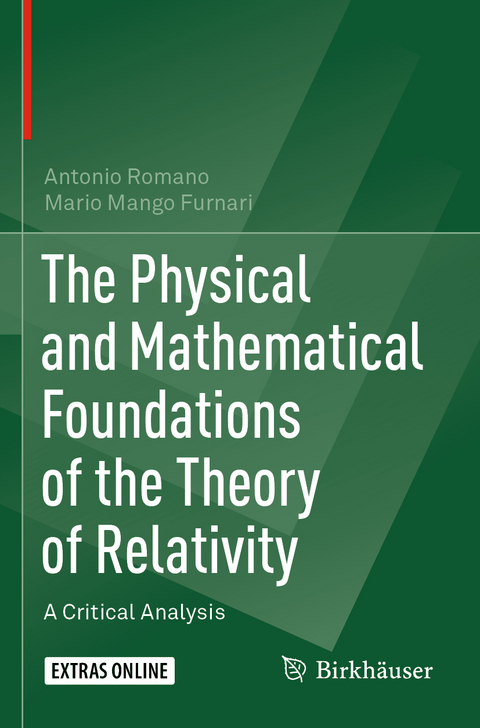
The Physical and Mathematical Foundations of the Theory of Relativity
Springer International Publishing (Verlag)
9783030272395 (ISBN)
This unique textbook offers a mathematically rigorous presentation of the theory of relativity, emphasizing the need for a critical analysis of the foundations of general relativity in order to best study the theory and its implications. The transitions from classical mechanics to special relativity and then to general relativity are explored in detail as well, helping readers to gain a more profound and nuanced understanding of the theory as a whole.
After reviewing the fundamentals of differential geometry and classical mechanics, the text introduces special relativity, first using the physical approach proposed by Einstein and then via Minkowski's mathematical model. The authors then address the relativistic thermodynamics of continua and electromagnetic fields in matter - topics which are normally covered only very briefly in other treatments - in the next two chapters. The text then turns to a discussion of general relativity by means of the authors' unique criticalapproach, underlining the difficulty of recognizing the physical meaning of some statements, such as the physical meaning of coordinates and the derivation of physical quantities from those of space-time. Chapters in this section cover the model of space-time proposed by Schwarzschild; black holes; the Friedman equations and the different cosmological models they describe; and the Fermi-Walker derivative.Well-suited for graduate students in physics and mathematics who have a strong foundation in real analysis, classical mechanics, and general physics, this textbook is appropriate for a variety of graduate-level courses that cover topics in relativity. Additionally, it will interest physicists and other researchers who wish to further study the subtleties of these theories and understand the contemporary scholarly discussions surrounding them.
Antonio Romano has been the author or coauthor of numerous books on mechanics and Mathematica, and he has taught courses in mechanics for 35 years at "Il Fredrico" University in Naples. Mario Mango Furnari is a senior researcher at Istituto di cibernetica "Edoardo Caianiello."
Preface.- Part I: Elements of Differential Geometry.- 1: Tensor Algebra.- 2: Introduction to Differentiable Manifolds.- 3: Transformation Groups, Exterior Differentiation and Integration.- 4: Absolute Differential Calculus.- Part II: Newtonian Dynamics, Gravitation, and Cosmology.- 5: Recalls of Classical Mechanics and Electrodynamics.- 6: Newtonian Gravitation.- Part III: Special Relativity.- 7: Physical Foundations of Special Relativity.- 8: Special Relativity in Minkowski's Space.- 9: Continuous Systems in Special Relativity.- 10: Electrodynamics in Moving Media.- Part IV: General Relativity and Cosmology.- 11: Introduction to General Relativity.- 12: Linearized Einstein's Equations.- 13: Cauchy's Problem for Einstein's Equations.- 14: Schwarzchild's Universe.- 15: Schwarzchild's Solution and Black-Holes.- 16: Elements of Cosmology.- 17: Relative Formulation of Physical Laws.- Bibliography.
"This book is very useful for universities as text book for undergraduate and post graduate students of physics and mathematics. ... strongly recommend this book for a textbook in any university." (P. K. Sahoo, zbMATH 1435.83002, 2020)
| Erscheinungsdatum | 08.10.2020 |
|---|---|
| Zusatzinfo | XVI, 496 p. 47 illus., 1 illus. in color. |
| Verlagsort | Cham |
| Sprache | englisch |
| Maße | 155 x 235 mm |
| Gewicht | 783 g |
| Themenwelt | Mathematik / Informatik ► Mathematik ► Geometrie / Topologie |
| Naturwissenschaften ► Physik / Astronomie ► Relativitätstheorie | |
| Naturwissenschaften ► Physik / Astronomie ► Theoretische Physik | |
| Schlagworte | Einstein's equations • Equivalence Principle • Fermi-Walker Derivative • General relativity • Schwarzschild's Solution • Special relativity |
| ISBN-13 | 9783030272395 / 9783030272395 |
| Zustand | Neuware |
| Informationen gemäß Produktsicherheitsverordnung (GPSR) | |
| Haben Sie eine Frage zum Produkt? |
aus dem Bereich


